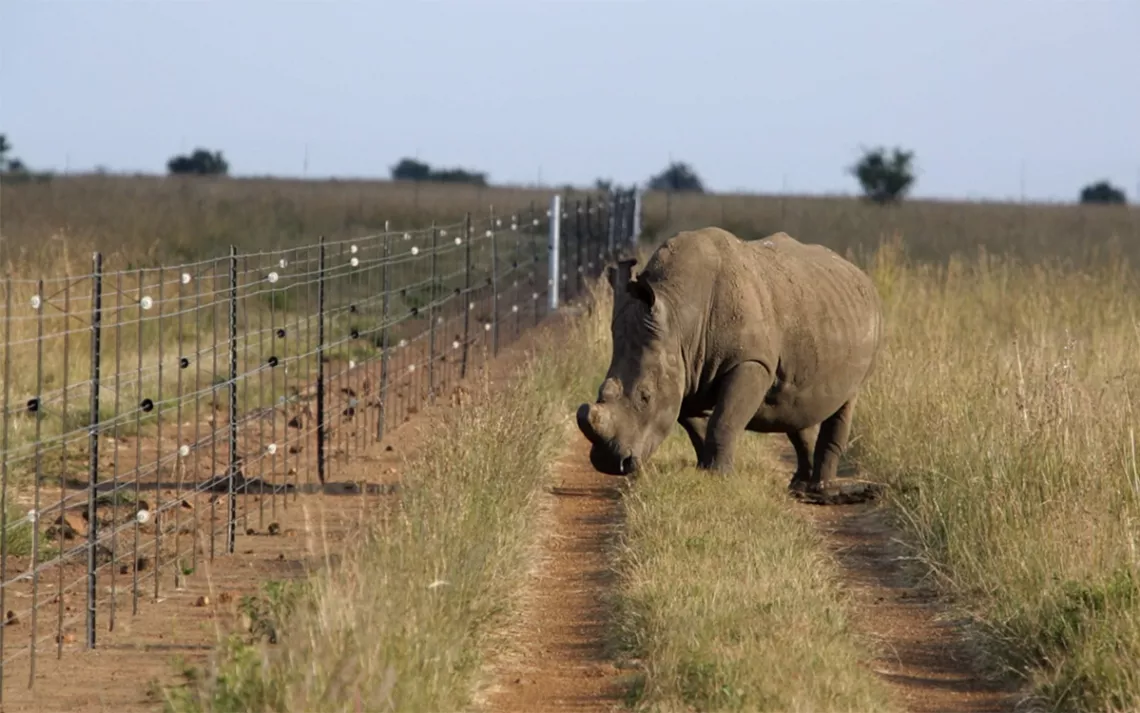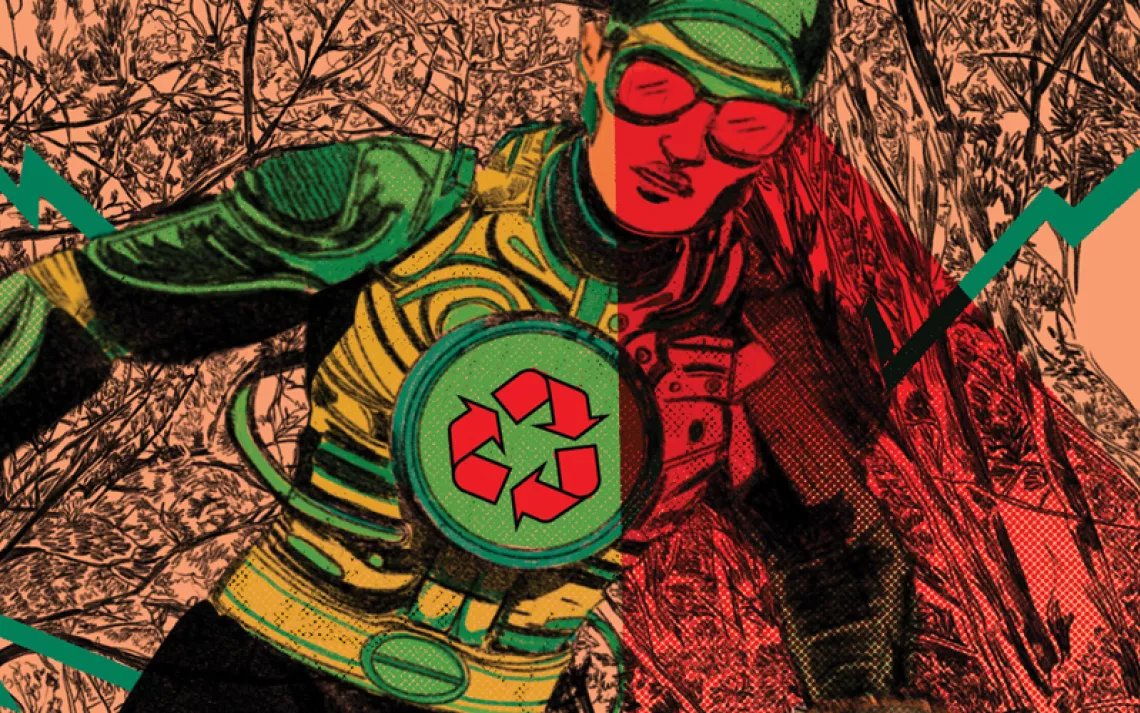“Trophy” Turns Lens on “If It Pays, It Stays” Conservation Hunting
New documentary explores the moral ambiguities of game ranching

Photo courtesy of Impact Partners
Trophy is now airing on CNN. Click here for more information.
On a calm, cloudy day, in the midst of stray branches and field brush, Dorper-sheep breeder Philip Glass walks with his son to a lookout station—one arm around the boy’s shoulder, the other cradling a long, scoped hunting rifle. As they spot a pack of deer passing in the distance, the son whispers, “Do you think I can shoot that one?” Glass responds, “We’d have to be able to age him. We’d have to be able to tell how old he is before we can make that decision.”
When two bucks appear in the sightline, Glass positions the rifle out the window, whispering to the boy, “Just get comfortable and get ready. Take your time.”
His son peers through the scope and pulls the trigger. The animal falls in the distance, seizing on the ground. Glass laughs, “You put him down, Son!”
“Yes!” the boy exclaims.
This opening scene of the haunting new documentary Trophy, directed by Shaul Schwarz (Narco Cultura) and Christina Clusiau (Aida's Secrets), is perhaps the most clearly defined and disambiguated of the entire film. The culture around big-game hunting, and how a father passes it on to his son, thread the needle stitching together the extremely complex layers of this story. On the one hand, Trophy is about the moral ambiguities of “conservation hunting” and the commodification of wildlife in an age of mass extinction. On the other, it’s a subtle yet direct commentary on the ways in which we bequeath to the next generation a particular understanding of what defines our relationship to the natural world. In Glass’s case, that relationship is defined by a sense of domination, entitlement, and authority.
Under scrutiny here is the “if it pays, it stays” principal of conservation hunting. The notion is simple, and not dissimilar to the argument for legalizing drugs. Ban the killing of wildlife and the selling of animal horns and you inadvertently create a black market where the value of killing and selling skyrockets, leading to more of both at a time when some of the wild’s most impressive animals, such as rhinos, lions, and elephants, are careening toward extinction. Legalize that killing and selling—and create an open market where both can be controlled and regulated—and you stabilize the value as well as the rate, which, theoretically, leads to less killing. In other words, if you want to save endangered rhinos or elephants from extinction, breed them for their horns or breed them to be killed. Banning each will just lead to more of the same.
It’s a head-spinner that will make most conservation-minded people nauseous, because, as the film tries to make clear, the ethical geographies to this approach are complicated, often shifting between cultures, intentions, and points of view.
The central champion of big-game ranching is John Hume, owner of the Buffalo Dream Ranch in South Africa, where he houses upward of 1,500 rhinos. His purported goal is to protect the rhinos from poachers in part by farming the animals, sawing off their horns, and selling them on the open market, then reinvesting the money into breeding the animals and, he argues, thereby protecting them. At the time of this filming, he is fighting against a South Africa moratorium on selling rhino horn for profit. (Hume successfully sued to have the moratorium overturned, and just recently put over 250 horns up for auction.)
“I truly believe that I have the recipe to save the rhino from extinction,” he says. “Sell the horns and keep the rhinos alive and breeding more and more. I will give you a challenge: Give me one animal that’s gone extinct while farmers were breeding it and making money out of it. There’s not one.”
While the film documents the ways in which his project is anathema to most dedicated animal conservationists, it also challenges us with facts on the ground that scramble our moral clarity. When Hume started the project, it was legal to sell rhino horn in South Africa. After the country instituted a moratorium on the trade in 2009, poaching skyrocketed. In 2007, according to the film, there were 13 rhinos poached in South Africa. By 2014, the number hit 1,215—alarming statistics at a time when there are less than 30,000 rhinos in the world (there were an estimated 500,000 rhinos in 1900.)
The film takes us from South Africa to hunts in Zimbabwe and Namibia, tracking big-game hunters such as Glass and others for whom the goal of the “Big Five" (killing an elephant, lion, leopard, buffalo, and rhinoceros) is a kind of Holy Grail. At hunting conventions in places like Las Vegas, we encounter hunters who consistently defy our reflex to judgment. In most cases, these are the same cast of characters that you might encounter in any situation in everyday life: goofy, fun, tired, bored. Meanwhile, our expectations of what is right or wrong when it comes to animal conservation are repeatedly scrambled. Chris Moore, an anti-poaching wildlife officer in Zimbabwe, reveals that his operation is partly subsidized by money collected from trophy hunting. Some locals don’t share the western conservation ethic, since, from their point of view, people are being killed by lions or trampled by elephants, or having their crops devoured by other critters.
Through it all, we track Glass’s story as he works hard to get to his goal of the Big Five, each kill a beloved talisman destined for his already-crowded living room wall. We learn toward the end how his relationship with his own father, an avid hunter as well, informs this story. Glass’s moral and emotional clarity justifying the enthusiasm is enough to make anyone pause. “When I was a little boy, I had a BB gun,” he says. “I can vividly remember my mother telling me, 'You can go shoot birds, but don’t shoot a red bird.' What did I do? I went and shot a red bird. I can still remember holding that bird in my hands and looking at its beak, and just seeing how beautiful it was and how it was made. Right there in that moment, I realized that there was no way that I could’ve loved that bird any more. Even though it was dead.”
Interspersed throughout the film is gorgeous cinematography punctuated by gruesome scenes of animals being shot and struggling to survive before being put down. The sounds and sights of laughter and delight, even weeping with joy, from the hunters on the other end of the gun is heartbreaking. At one point, the camera zooms in on an elephant’s tears as it’s dying from a final bullet, then slowly pulls away, rising higher and higher into the air, putting distance between the corpse and us. And yet we don’t entirely pull away—the truth of the kill and its tragedy remain in full view.
Trophy offers little consolation to anyone already feeling unmoored at a time when so much in the world seems contingent and hanging off the precipice. The film will have you scratching your head over the conundrum of whether, at a time when so many species are facing extinction, we should get into the business of killing and controlling animals in order to save them. What we should really be wondering is how we ever got into such a mess in the first place.
Trophy opens in Los Angeles today at the Laemmle Monica Film Center, 1332 2nd Street, in Santa Monica.
 The Magazine of The Sierra Club
The Magazine of The Sierra Club







